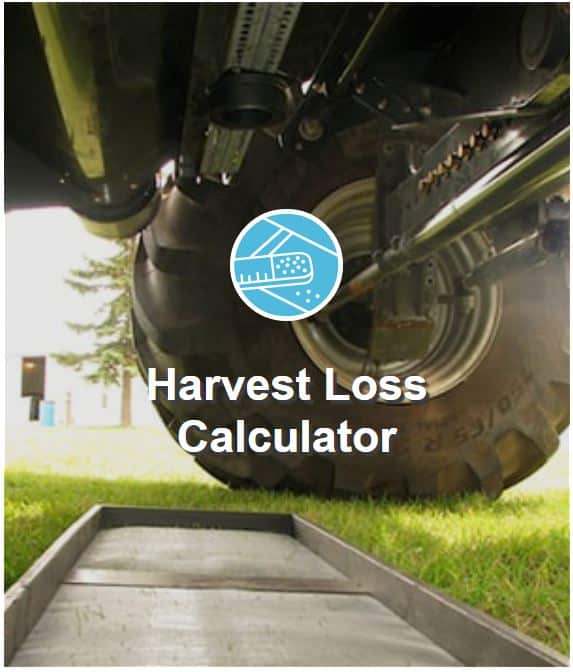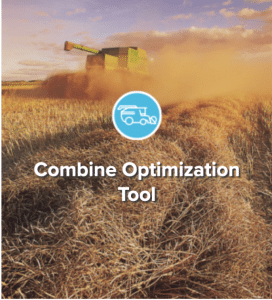The Canola Council’s goal is for an average threshing loss of two per cent (or less) of total yield across the Prairies. But what is an acceptable amount of canola combine loss for your farm? Every farm will have a different answer, striking their own balance between capturing as much of the crop as possible while also maintaining harvest productivity.
To answer that question for your farm, you must first figure out the level of losses out the back of the combine. You might decide that one bushel per acre (bu./ac.) is an acceptable amount of loss, but what if your combine is throwing over three bu./ac. throughout most of the harvest day? You have to check to find out. And then you can decide whether to keep going or start making adjustments.
You need three tools to accurately measure losses:
- A drop pan. You can get pans that attach to the bottom of the combine and drop by activating a switch in the cab. These pans usually match closely to the discharge width of the combine sieves. For a lower-tech option, someone can toss a throw pan or use a pan on a stick while the combine goes by at normal operation. No matter what pan you use, you need to know its square footage.
- Some way to separate the seed from the chaff. This can be done by hand, but it can be time consuming. Canola screens or an airstream to lift chaff is best. Bushel Plus produces a screening device for this purpose.
- A weight or volume measure. Measure the clean collected sample in grams or millilitres, dividing by the square footage of the pan to get a result in millilitres or grams per square foot. Plug your combine dimensions (header and discharge width) and the amount of loss into the conversation tables to get loss in bu./ac.
- Use the Harvest loss tool to easily calculate combine losses.
- For the tables, print off the Combine Seed Loss Guide.
Once you’ve made a few loss measurements, the next part of the process is to determine how to reduce those losses – if you decide they’re too high. The Combine Optimization Tool at canolacalculator.ca is an excellent resource, showing step by step adjustments to align combine losses with your harvest goals.
In 2019, Prairie Agricultural Machinery Institute (PAMI) visited 31 farms across Alberta, Saskatchewan and Manitoba, and measured canola threshing losses from 50 machines. (See the report.) These included 40 models from six combine manufacturers. The survey found no connection between combine model and the amount of loss, but weather was a major factor. This emphasizes the need to regularly adjust and test throughout the day and harvest season. Temperatures greater than 23°C, relative humidity less than 45 per cent, and low cloud cover all contributed to lower losses.
Once you become familiar with a machine, you will start to recognize ideal settings for those harvest afternoons that are warm and dry and for the evenings when the straw starts to toughen up. But you can’t get familiar without putting in the time and measuring losses from field to field and with changing weather conditions.
You will have in your mind what kind of loss you’re willing to accept, but you can’t know whether the combine is on target unless you check. And by measuring losses, you have a better idea how the combine performs and can be reassured that the combine is doing exactly what you want it to do.
Dig deeper
- Combine Optimization Tool at CanolaCalculator.ca.
- Harvest Loss Tool at CanolaCalculator.ca
- Short video on how to measure losses
- Canola Encyclopedia chapter on harvest management
- Canola Research Hub blog: Make the most of canola yields by minimizing losses at harvest



